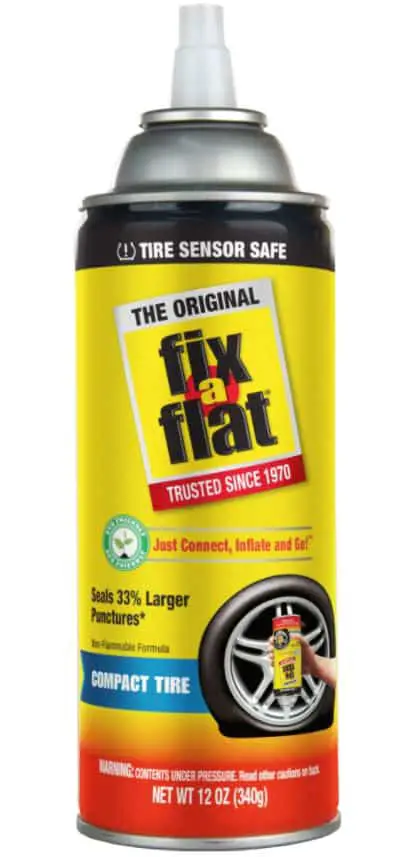Introduction
Flat tires are an unwelcome road companion, leading to delays, frustrations, and potentially hazardous situations while driving. While sudden, dramatic flats are easily noticeable, slow leaks can be insidious, gradually deflating tires over time, leading to a false sense of security that can end abruptly with a sudden loss of air pressure.

Image: autosphile.com
Understanding the causes and remedies for slow leaks empowers drivers to maintain optimal tire health, ensuring safety and preventing unexpected breakdowns. By delving into the intricacies of tire construction, symptoms of slow leaks, and proven repair techniques, this comprehensive guide arms you with the knowledge and skills to tackle this common automotive issue.
Understanding Tire Anatomy: Delving into the Architecture of Inflation
To effectively treat a slow leak, it’s essential to grasp the structural components of a tire.
- Tread: The outermost layer, providing traction and water displacement.
- Steel Belts: Beneath the tread, these belts reinforce the tire’s strength and stability.
- Sidewalls: The flexible sections connecting the tread to the rim, accommodating lateral forces during cornering.
- Inner Liner: The innermost layer, an airtight membrane that retains air pressure within the tire.
Symptoms of a Slow Leak: Identifying the Telltale Signs of Air Loss
Recognizing the symptoms of a slow leak is crucial for prompt action.
- Persistent Low Tire Pressure: Requires frequent tire inflation, indicating a gradual loss of air.
- Uneven Tire Wear: Premature or irregular tread wear can signal slow leaks, as uneven weight distribution affects how the tire contacts the road.
- Hissing or Bubbling Sounds: Audible signs of air escaping, indicating a leak in progress.
- Deflated or Flat Tire: The ultimate consequence of an untreated slow leak, leading to compromised handling and safety hazards.
Causes of Slow Leaks: Unraveling the Culprits Behind Air Loss
Slow leaks stem from various causes, each requiring a tailored approach to repair.
- Punctures: Nails, screws, or other sharp objects puncturing the tire, creating a direct path for air to escape.
- Valve Stem Leaks: Damaged or loose valve stems, where the tire’s air is filled, allow air to seep out gradually.
- Rim Leaks: Corrosion or damage to the rim’s bead area, where the tire seals against the wheel, can result in slow leaks.
- Sidewall Damage: Cuts, abrasions, or bulges on the tire’s sidewalls can compromise the tire’s integrity, leading to slow leaks.
- Bead Leaks: Improper tire mounting or damage to the bead, where the tire’s inner liner meets the rim, can cause slow leaks.

Image: www.engineeringchoice.com
DIY or Professional Repair: Evaluating Repair Options for Slow Leaks
The choice between DIY or professional repair depends on several factors.
DIY Repair
Suitable for small punctures in the tire’s tread area, typically caused by nails or screws. Requires basic tools, a tire repair kit, and the ability to remove and reinstall the tire.
Professional Repair
Recommended for complex leaks, such as sidewall damage, valve stem issues, or punctures that cannot be accessed from the tread area. Requires specialized equipment and expertise to ensure a proper and safe repair.
DIY Tire Repair: A Step-by-Step Guide to Plugging the Leak
Materials:
- Tire repair kit (plug, insertion tool, adhesive)
- Jack and jack stands
- Lug wrench
- Tire gauge
Steps:
- Safety First: Engage the parking brake, position the jack stands, and secure the vehicle.
- Locate the Puncture: Examine the tire’s tread area for the offending nail or screw.
- Remove the Object: Use pliers or tweezers to carefully extract the sharp object.
- Prepare the Hole: Use the insertion tool from the repair kit to ream and clean the puncture hole.
- Apply Adhesive: Dip the tip of the plug into the adhesive and insert it into the hole.
- Set the Plug: Push the plug firmly into place using the insertion tool.
- Trim the Plug: Use scissors or a utility knife to trim any excess plug material protruding from the tire.
- Inflate and Inspect: Reinstall the tire and inflate it to the recommended tire pressure. Inspect the area around the repair for any signs of leakage.
Seeking Professional Help: When to Call in the Experts
If the slow leak persists despite your best efforts, professional repair is necessary. Specialized equipment and expertise are required for:
- Sidewall Damage: Repairing cuts, abrasions, or bulges on the tire’s sidewalls requires specialized equipment and vulcanization techniques.
- Valve Stem Issues: Replacing or repairing damaged valve stems requires dismounting the tire.
- Rim Leaks: Corrosion or damage to the rim’s bead area requires specialized sealant or re-sealing.
- Bead Leaks: Ensuring a proper seal between the tire’s inner liner and the rim requires dismounting and remounting the tire.
Prevention is Key: Minimizing the Risk of Slow Leaks
Proactive measures can reduce the likelihood of slow leaks:
- Regular Tire Inspections: Periodically check tires for punctures, cuts, or abnormalities.
- Proper Tire Inflation: Maintain recommended tire pressure as per the vehicle’s owner’s manual.
- Avoid Road Hazards: Be aware of sharp objects, potholes, and uneven surfaces.
How To Fix A Slow Leak On A Car Tire
Conclusion
Understanding and addressing slow leaks in car tires is essential for maintaining optimal tire health and ensuring road safety. By recognizing the symptoms, identifying the causes, and mastering DIY or professional repair techniques, drivers can effectively combat this common automotive issue. Regular tire inspections and proactive maintenance measures minimize the risk of slow leaks, providing peace of mind and a smooth driving experience.
Remember, attending to slow leaks promptly prevents sudden tire deflation and the associated inconveniences and hazards. By staying informed and taking the necessary steps, you can keep your tires in peak condition, ensuring a secure and worry-free driving journey.







